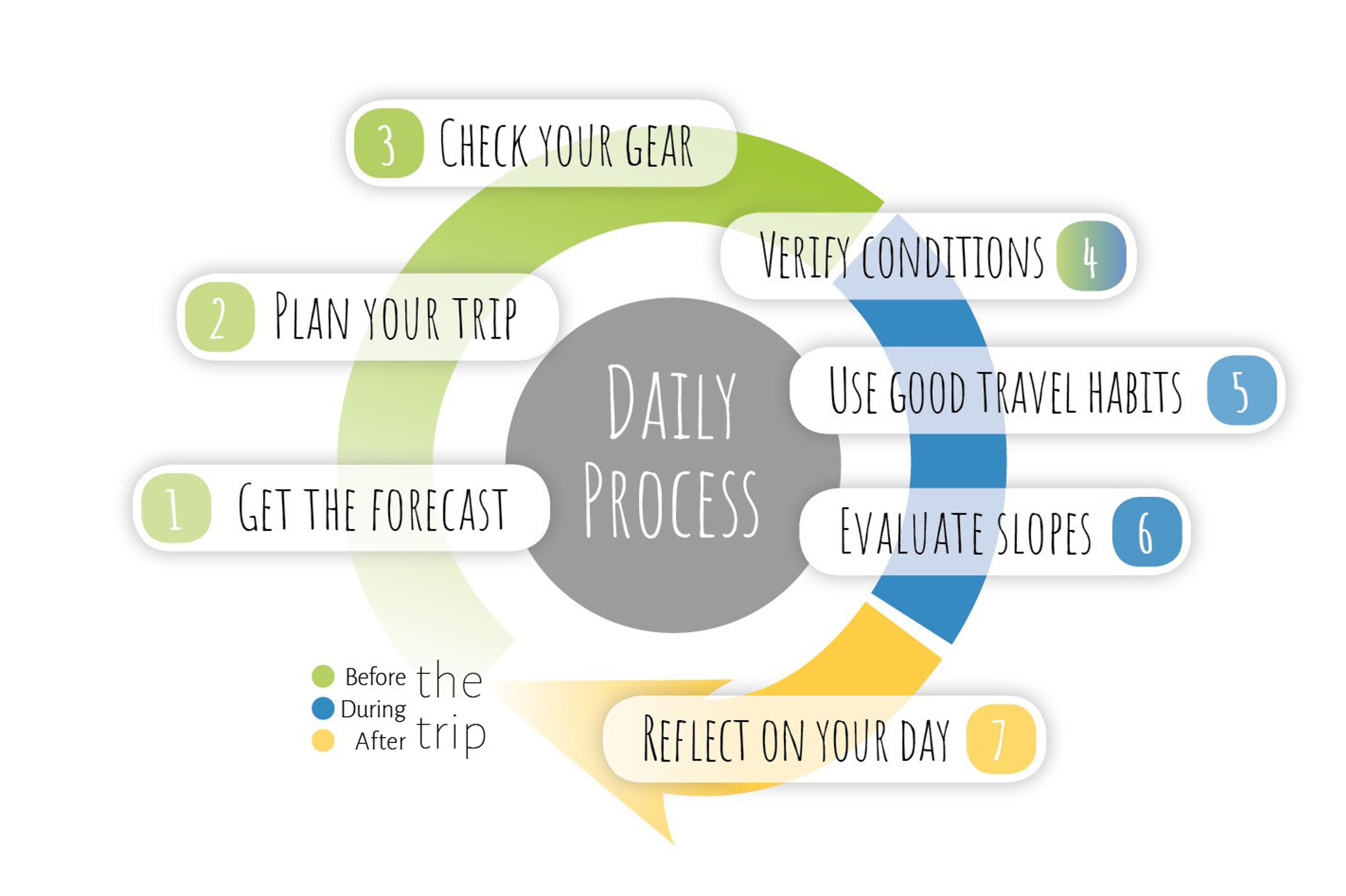Chapter 6
The Daily Process

Venturing into the backcountry in winter is a wonderful, freeing experience; however, there are many things to consider before you head out so you can enjoy a great day and come home safe and sound. All professionals and experienced recreationists have a daily process they follow before heading out. You will learn more about the daily process in your AST 1 course, but this section will give you an idea about how it works.

Choose Your Group
One of the most important elements of your day is your group. Human factors play a major role in many avalanche accidents. How members of your group interact with each other can affect how decisions are made. These are some things to consider:
What are your expectations for the day? Groups tend to function best when expectations, as well as risk tolerances, are in general alignment. If your friend wants to ride a big line but you’re not comfortable with that objective, this is not a good start.
Group size: A small group can travel faster and more efficiently but if something goes wrong, you won’t have any extra resources to help with a rescue. Conversely, a large group is harder to manage, moves slower, and there are more opportunities for things to go wrong. Most experts prefer groups of three to five. Solo travel is very risky and definitely not recommended.
Communication: Successful groups prioritize open communication between their members. A common mistake is when the most experienced member (or sometimes the most skilled at your sport) takes control of the group’s movements. Even the least experienced members should feel free to speak up and contribute to decision-making conversations.